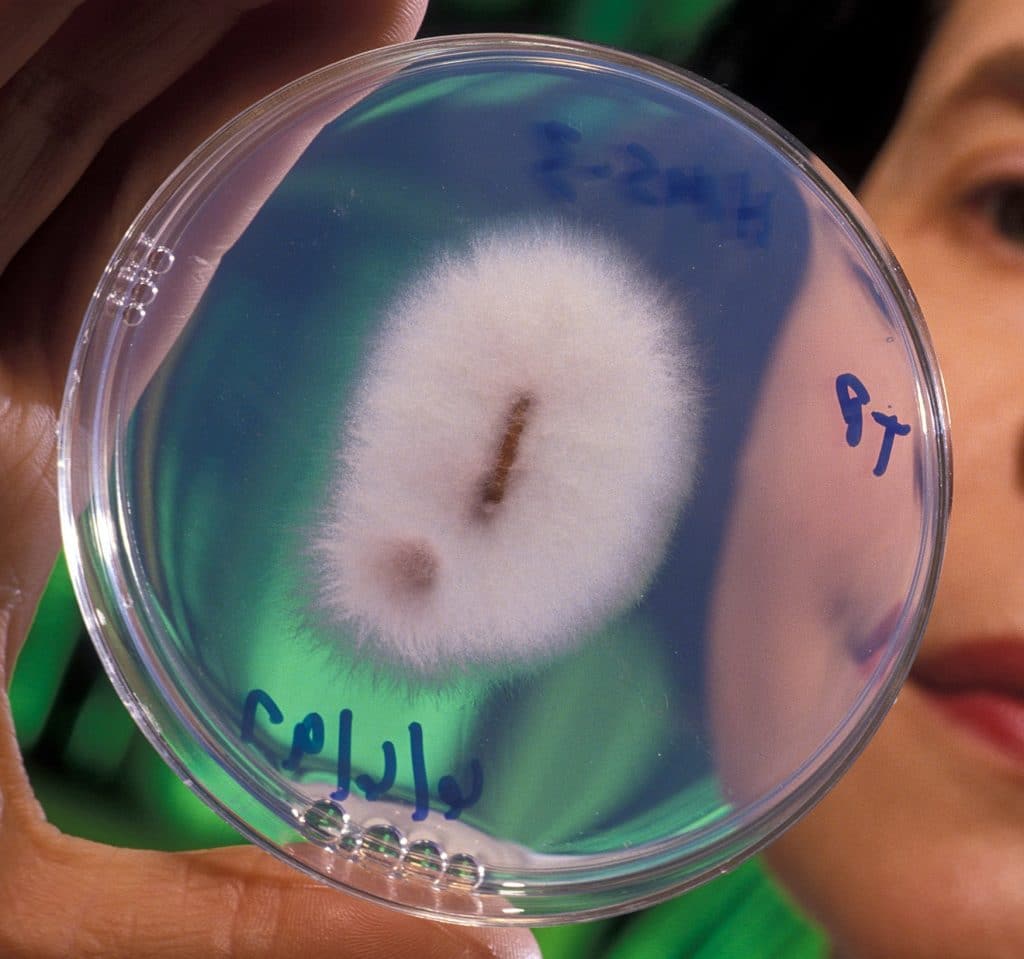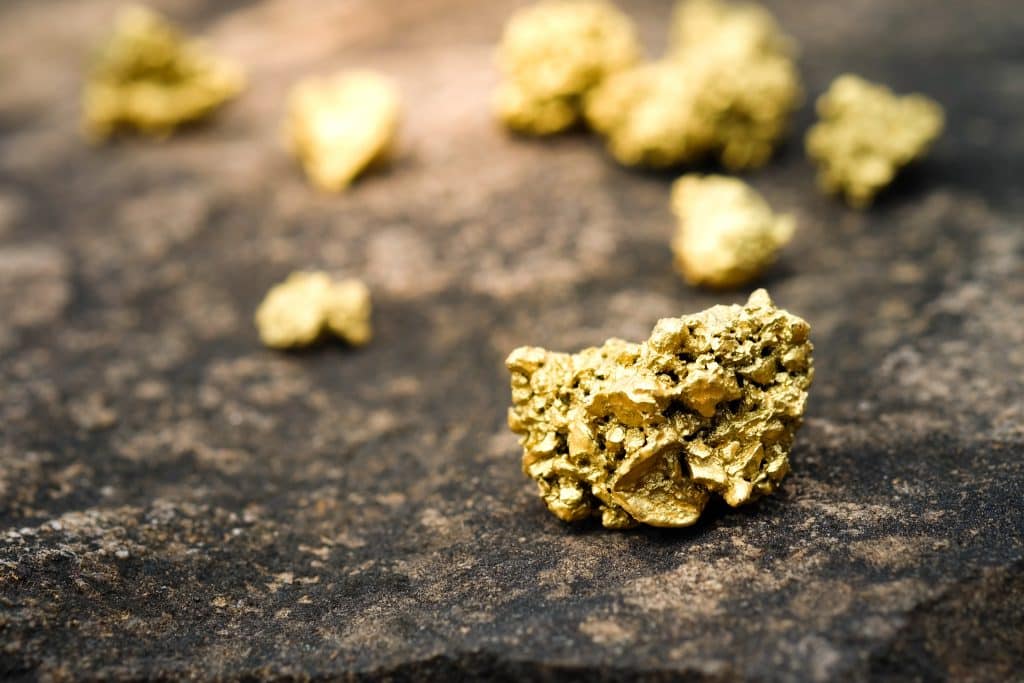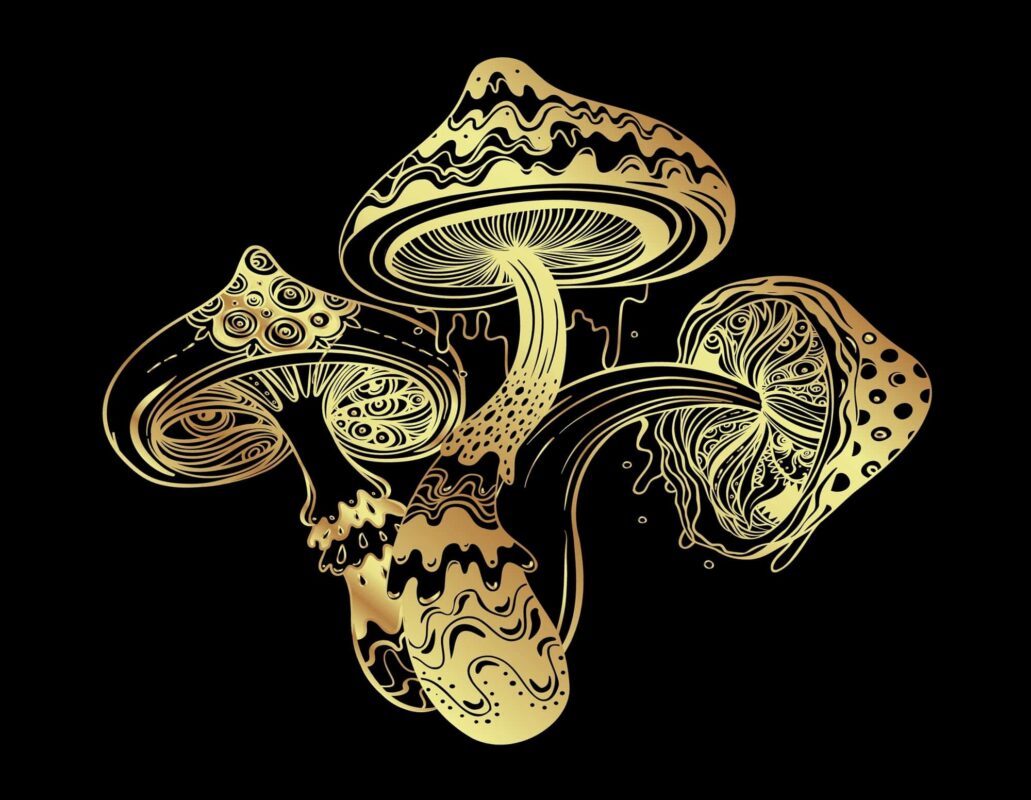edible gold, Featured, fungi, gold, gold in fungi, gold in mushrooms, Health, Lifestyle, Mushrooms, mushrooms and gold, Psychedelics
The Connection Between Mushrooms and Gold
When I grew my last flush of mushrooms, I noticed something interesting in the soil – what appeared to be small, flat, golden flakes. “Is there gold in soil?” I thought to myself. So naturally, I began doing some research. As it turns out, it’s more likely that what I found was mica or vermiculite, but either way, it led me to dig deeper into whether a connection between gold and fungi exists at all… and as it turns out, it does!
Do mushrooms store gold? Can they be used to located gold deposits in the earth? Are there any benefits to consuming gold? Let’s take a closer look.
Golden mushrooms – a biological advantage
Although research is minimal, the most recent discovery on this front was a fungus coated in particles of gold. The fungus in question is called Fusarium oxysporum, grows throughout western Australia, and it absorbs, dissolves and redeposits gold particles from its surroundings, while some of the gold attaches to the strands. According to researchers, “The process is highly unusual as gold is a chemically inactive substance; the fact that gold responds to the fungus in this way is quite surprising.”

It has yet to be determined how exactly the mushrooms find and identify gold, but it does to seem provide a biological edge over non-gold storing fungi, although the reasons why or mechanisms of how are also a mystery. However, the study noted that these gold-coated mushrooms grow larger, spread faster, and play host to a much more varied range of other fungi – meaning they add more biodiversity to the soil than their counterparts.
“Many types of fungi degrade and recycle organic matter, and some are known for their interactions with certain metals, including aluminum, iron, manganese and calcium,” said Tsing Bohu, lead author from the study and researcher with Australia’s Commonwealth Scientific and Industrial Research Organization (CSIRO).
“But gold is so chemically inactive that this interaction is both unusual and surprising — it had to be seen to be believed,” Bohu added. The findings, which they plan to expand on in the future, were published on May 23, 2019, in the journal Nature Communications.
Benefits of consuming gold for humans
Edible gold has been consumed for thousands of years, and still is to this day. The earliest evidence of gold consumption is found in ancient Egypt and dates back almost 5,000 years. Egyptians believed gold could be used to connect to the divine, so it was used regularly for spiritual, physical, and emotional purification. The added gold to many different elixirs that they would use medicinally to restore and rejuvenate cells in the body. It’s also believed that Cleopatra used some form of gold beauty treatment daily, including baths infused with gold and a face mask made of pure gold.
Since then, it has been used with relative consistency throughout many different regions, particularly Japan, China, and India where it was often prescribed by physicians for numerous different ailments. Edible gold was also very popular among the courts of the kings of European countries in the Middle Ages. Doctors during those times prescribed gold to help with arthritis, pain, and various types of inflammation.
Edible gold is still considered a delicacy in many parts of the world and is often used as a garnish for baked goods and alcoholic beverages. In Europe, the Food Safety Administration (EFSA) has approved gold (E-175) as a food additive. Gold is safe to eat because it is a non-reactive element that is not absorbed during digestion. The purity of edible gold should be around 24 karats, above what is used in standard jewelry. Gold mixed with other metals can be toxic if consumed.
Gold-storing plants and animals
In Australia, it seems the harboring of gold isn’t limited to mushrooms alone. Geologists from CSIRO have made some fascinating discoveries when it comes to finding gold deposits in nature. For example, they found termites storing gold in their mouths for extended periods of time, as well various types of trees in the Kalgoorlie region that pull gold out of the earth and deposit it in their leaves.
Thank you for stopping in. Head over to the Cannadelics Weekly Newsletter for direct updates; and get access to awesome deals on cannabis buds, vapes, edibles, smoking devices and equipment, cannabinoid compounds, and some psychedelic products! Go get high responsibly!
And despite the lack of research, this is something that has been known about for quite some time. The U.S. government even published a report that describes exactly how much gold can be found in various species of animals and plants, including humans. The report, titled “Gold Content of Water, Plants, and Animals,” was written by Robert S. Jones and published by the Department of Interior in 1970. You can view the full report here.
Here are a few notes from the report:
- Seaweed contains about 0.17 parts per million of gold
- Corn mint plants from what was formerly Czechoslovakia contain about 0.2 parts per million of gold
- Sponges from Hawaii contain about 0.23 parts per million of gold
- Starfish contain about 30 parts per million of gold
- Antlers from deer harvested in gold-producing regions of the U.S. and Europe contain about 60 parts per million of gold
- The dry matter of fish muscle contains around 0.0012 ppb gold
- As much as 430 ppb gold has been found in human hair and around 10 to 30 ppb gold in human teeth
To quote the report: “Excluding the earlier work of Noddack and Noddack (1939), marine animals contain, by far, the least amount of gold and terrestrial animals contain the most gold. Bones, teeth, and phosphorite are calcium phosphates with comparable gold contents. These naturally occurring compounds appear to be similar in their gold content, irrespective of their origin, and probably reflect the gold level of their environment. The known content of gold in animals apparently supports Vinogradov’s (1953) observation that the amount of gold found in animal organs is entirely casual and that there are no auriferous animals anywhere in the world.”
Can fungi be used to locate gold deposits?

There is ongoing research as to whether mushrooms are somehow linked to gold deposits within the earth. Because traditional methods of mining for gold aren’t exactly eco-friendly, if there is a connection between fungi above ground and gold beneath the surface, that could have a huge impact on the gold recovery process and the gold industry as a whole.
Locating gold deposits through fungi, trees, and insect nests is more cost efficient and less harmful to the environment than drilling is. It’s also believed that this method of prospecting for gold could be more accurate than what is already available, which would decrease costs and carbon footprints even further.
Final thoughts
Welcome readers! Thanks for hanging out with us at Cannadelics.com; an independent publication that brings you new and ongoing stories in the cannabis and hallucinogen spaces. Come ’round regularly so you don’t miss out on anything; and subscribe to our Cannadelics Weekly Newsletter, to ensure you’re never late to get the news.
Related
Source link

